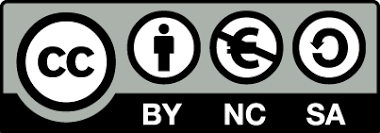| dc.contributor.author | ปรุฬห์ รุจนธำรงค์ | th_TH |
| dc.contributor.author | Parun Rutjanathamrong | th_TH |
| dc.contributor.author | ตวงรัตน์ โพธะ | th_TH |
| dc.contributor.author | Tuangrat Phodha | th_TH |
| dc.contributor.author | กิตติยา จันทรธานีวัฒน์ | th_TH |
| dc.contributor.author | Kittiya Jantarathaneewat | th_TH |
| dc.contributor.author | ธนะวัฒน์ วงศ์ผัน | th_TH |
| dc.contributor.author | Thanawat Wongphan | th_TH |
| dc.date.accessioned | 2025-07-24T03:22:13Z | |
| dc.date.available | 2025-07-24T03:22:13Z | |
| dc.date.issued | 2568-07 | |
| dc.identifier.other | hs3283 | |
| dc.identifier.uri | http://hdl.handle.net/11228/6291 | |
| dc.description.abstract | ที่มา การจัดประเภทยาไม่ควรพิจารณาเพียงการเข้าถึงเท่านั้น แต่ควรคำนึงถึงความเสี่ยงที่เกี่ยวข้องกับการใช้ยาเป็นเกณฑ์ในการจัดประเภทด้วย การศึกษานี้มีวัตถุประสงค์เพื่อตรวจสอบจุดที่เป็นปัญหาและแนวคิดที่เกี่ยวข้องกับเกณฑ์การจัดประเภทยาสามัญประจำบ้านในประเทศไทย ระเบียบวิธีวิจัย งานวิจัยนี้ใช้วิธีการเชิงคุณภาพแบบผสมผสานประกอบด้วยสองระยะ ระยะที่ 1 เป็นการทบทวนวรรณกรรมเกี่ยวกับเกณฑ์การจัดประเภทยาสามัญประจำบ้านของประเทศไทยในช่วง 20 ปีที่ผ่านมา (พ.ศ. 2548-2567) โดยวิเคราะห์กรอบแนวคิดของเกณฑ์ ระยะที่ 2 ประกอบด้วยการสัมภาษณ์เชิงลึกกับผู้มีส่วนได้ส่วนเสียที่เกี่ยวข้องกับการกำหนดเกณฑ์การจัดประเภทยาสามัญประจำบ้าน มีการวิเคราะห์เนื้อหาตามด้วยการสังเคราะห์ผลการศึกษาจากทั้งสองระยะเพื่อพัฒนาข้อเสนอแนะเชิงนโยบายที่แก้ไขช่องว่างในระบบการจัดประเภทยาสามัญประจำบ้านของไทยในปัจจุบัน ผลการศึกษา เกณฑ์การจัดประเภทยาสามัญประจำบ้านในประเทศไทยที่ผ่านมาถูกกำหนดขึ้นบนพื้นฐานของข้อมูลสองประเภท ได้แก่ (1) ข้อมูลระบาดวิทยาของโรค ซึ่งบ่งชี้ถึงความจำเป็นด้านสาธารณสุขสำหรับการดูแลตนเองขั้นพื้นฐานและการเข้าถึงยา และ (2) ข้อมูลความปลอดภัยของยา ซึ่งถูกกำหนดโดยปัจจัยเสี่ยงต่าง ๆ รวมถึงการใช้ยาในทางที่ผิด การดื้อยาต้านจุลชีพ และอาการไม่พึงประสงค์ที่รุนแรง ผลจากการสัมภาษณ์เชิงลึกพบช่องว่างในเกณฑ์การจัดประเภทยาสามัญประจำบ้าน โดยเฉพาะความจำเป็นในการมีข้อมูลการศึกษาความเสี่ยงและประโยชน์ และข้อมูลหมวดหมู่การรักษาที่สอดคล้องกับแนวทางการรักษาในปัจจุบัน อย่างไรก็ตาม การปรับปรุงเกณฑ์ควรมีการปรึกษาหารือกับประชาชน ซึ่งได้รับผลกระทบโดยตรงจากการจัดประเภทยาในแง่ของการดูแลตนเอง การเข้าถึงยา และการเข้าถึงข้อมูลยา นอกจากนี้ การปรึกษากับผู้ผลิตยามีความจำเป็น เนื่องจากการเปลี่ยนแปลงอาจส่งผลกระทบต่อกระบวนการผลิตยา ต้นทุนการผลิต และความเป็นไปได้ในการผลิต เพื่อให้มั่นใจว่าสอดคล้องกับความต้องการของประชาชน สรุป เกณฑ์การจัดประเภทในอนาคตควรรักษาสมดุลระหว่างการปรับปรุงการเข้าถึงยาและการรักษาความปลอดภัยของสาธารณะ โดยคำนึงถึงพลวัตของความก้าวหน้าทางการแพทย์และความต้องการด้านการดูแลสุขภาพที่เปลี่ยนแปลงไป ผลการศึกษานี้ให้ข้อมูลเชิงลึกที่มีคุณค่าสำหรับผู้กำหนดนโยบายและหน่วยงานด้านสาธารณสุขในการพัฒนาระบบการจัดประเภทยาที่แข็งแกร่งและตอบสนองมากขึ้นในประเทศไทย | th_TH |
| dc.description.sponsorship | สถาบันวิจัยระบบสาธารณสุข | th_TH |
| dc.language.iso | th | th_TH |
| dc.publisher | สถาบันวิจัยระบบสาธารณสุข | th_TH |
| dc.rights | สถาบันวิจัยระบบสาธารณสุข | th_TH |
| dc.subject | ยาสามัญประจำบ้าน | th_TH |
| dc.subject | ภาวะผู้นำและการอภิบาล (Leadership and Governance) | th_TH |
| dc.title | ทบทวนสถานะทางกฎหมายของยาสามัญประจำบ้าน | th_TH |
| dc.title.alternative | Legal Status Reviews of Household Medicines | th_TH |
| dc.type | Technical Report | th_TH |
| dc.description.abstractalternative | Background Drug classification should not consider only accessibility but also the risks associated with
drug use as a classification criterion. This study aims to examine the pain points and concepts related to
household medicine classification criteria in Thailand.
Methods This research employs a multi-method qualitative approach comprising two phases. Phase 1
involves a literature review of Thailand's household medicine classification criteria over the past 20 years
(2005-2024), analyzing the conceptual framework of the criteria. Phase 2 consists of in-depth interviews
with stakeholders involved in establishing household medicine classification criteria. Content analysis was
performed, followed by a synthesis of findings from both phases to develop policy recommendations
addressing gaps in the current Thai household medicine classification system.
Results Previous household medicine classification criteria in Thailand were established based on two
types of data: (1) epidemiological disease data, which indicates the public health necessity for basic selfcare
and drug accessibility, and (2) drug safety data, which is determined by various risk factors including
drug abuse, antimicrobial resistance, and severe adverse reactions. Results from in-depth interviews
identified gaps in the household medicine classification criteria, specifically the need for risk-benefit study
data and therapeutic category information that aligns with current treatment guidelines. However, criteria
improvements should involve public consultation with citizens, who are directly affected by drug
classification in terms of self-care, drug accessibility, and drug information access. Additionally,
consultation with pharmaceutical manufacturers is necessary, as changes may impact drug production
processes, production costs, and manufacturing feasibility, ensuring alignment with public needs.
Conclusion Future classification criteria should maintain a balance between improving drug accessibility
and maintaining public safety, while considering the dynamic nature of medical advances and evolving
healthcare needs. These findings provide valuable insights for policymakers and healthcare authorities in
developing more robust and responsive drug classification systems in Thailand. | th_TH |
| dc.identifier.contactno | 67-142 | |
| dc.subject.keyword | Household Medicine | th_TH |
| dc.subject.keyword | Drug Classification | th_TH |
| dc.subject.keyword | การจัดประเภทยา | th_TH |
| .custom.citation | ปรุฬห์ รุจนธำรงค์, Parun Rutjanathamrong, ตวงรัตน์ โพธะ, Tuangrat Phodha, กิตติยา จันทรธานีวัฒน์, Kittiya Jantarathaneewat, ธนะวัฒน์ วงศ์ผัน and Thanawat Wongphan. "ทบทวนสถานะทางกฎหมายของยาสามัญประจำบ้าน." 2568. <a href="http://hdl.handle.net/11228/6291">http://hdl.handle.net/11228/6291</a>. | |
| .custom.total_download | 118 | |
| .custom.downloaded_today | 0 | |
| .custom.downloaded_this_month | 0 | |
| .custom.downloaded_this_year | 0 | |
| .custom.downloaded_fiscal_year | 23 | |


